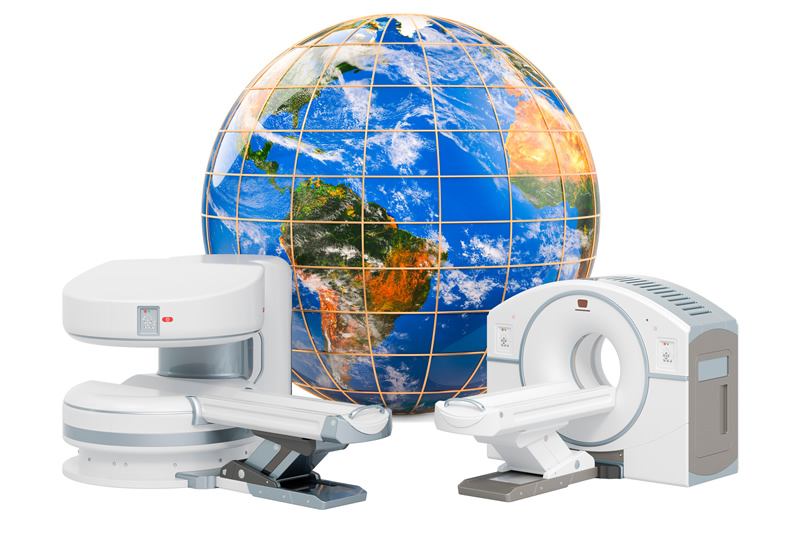As healthcare becomes increasingly globalized, the growth in the medical device industry continues to rise, fueled by technological advancements and increasing healthcare needs worldwide.
With this growth comes the imperative for medical device manufacturers to reach diverse markets across the globe. However, this expansion presents unique challenges, particularly in the realm of language and cultural nuances. For translation agencies tasked with ensuring the accurate and effective translation of medical device materials, navigating this terrain requires a strategic approach. In this article, we delve into the strategies employed by TrueLanguage and our partner Powerling to facilitate successful international medical device translations.
Understanding Regulatory Compliance
The foundation of successful medical device translations lies in adherence to regulatory standards set forth by governing bodies in target markets. From the FDA in the United States to the European Medicines Agency (EMA) in Europe, each region has its own set of stringent regulations governing the translation of medical device documentation.
Translation agencies must possess a comprehensive understanding of these regulations and ensure compliance throughout the translation process. This includes maintaining accuracy, consistency, and adherence to specific terminology mandated by regulatory authorities.
Engagement of Subject Matter Experts (SMEs)
Medical device translation necessitates a deep understanding of complex technical terminology and industry-specific jargon. Translation agencies employ subject matter experts (SMEs) with backgrounds in medicine, engineering, and regulatory affairs to ensure the accurate translation of content. These experts possess the requisite knowledge to navigate intricate technical concepts and ensure that translations align with the intended meaning of the source material. Their involvement is crucial in maintaining the integrity and precision of medical device documentation across language barriers.
Utilization of Translation Technology
In the digital age, translation agencies leverage cutting-edge technology to streamline the translation process and enhance efficiency. Computer-assisted translation (CAT) tools, such as translation memory systems and terminology management platforms, play a pivotal role in ensuring consistency and accuracy in medical device translations. These tools enable translation agencies to store previously translated content, ensuring consistency in terminology and style across various documents and languages. Additionally, machine translation, coupled with human review, can expedite the translation process while maintaining quality standards.
Cultural Adaptation and Localization
Beyond linguistic translation, successful international medical device translations necessitate cultural adaptation and localization. Translation agencies recognize the importance of tailoring content to resonate with target audiences in different cultural contexts. This involves not only linguistic considerations but also an understanding of cultural norms, preferences, and regulatory requirements. By adapting content to suit the cultural sensitivities and preferences of each market, translation agencies ensure that medical device materials are received positively and effectively communicate their intended message.
Rigorous Quality Assurance Processes
Quality assurance is paramount in the field of medical device translation, where accuracy and precision can have significant implications for patient safety and regulatory compliance. Translation agencies implement rigorous quality assurance processes to validate the accuracy, consistency, and linguistic integrity of translated materials. This may involve multiple rounds of review by qualified linguists, SMEs, and native speakers of the target language. Additionally, adherence to ISO 17100 standards, which govern translation services, ensures that translation agencies maintain stringent quality control measures throughout the translation process.
Collaboration with Clients and Regulatory Bodies
Effective communication and collaboration with clients and regulatory bodies are essential components of successful international medical device translations. Translation agencies work closely with medical device manufacturers to understand their specific requirements, preferences, and target markets. By fostering open dialogue and maintaining transparency throughout the translation process, agencies can address any concerns or revisions promptly, ensuring client satisfaction and regulatory compliance. Collaboration with regulatory bodies facilitates the smooth approval of translated materials, mitigating potential delays and ensuring adherence to regulatory standards.
Summarizing
In an interconnected global healthcare field, the successful translation of medical device materials is indispensable for reaching diverse markets and ensuring patient safety. Translation agencies play a pivotal role in facilitating this process, employing strategic approaches to navigate the complexities of language, culture, and regulatory compliance. By leveraging subject matter expertise, translation technology, and rigorous quality assurance processes, agencies uphold the highest standards of accuracy and precision in medical device translations.
Through collaboration with clients and regulatory bodies, they ensure that translated materials resonate with target audiences while adhering to stringent regulatory standards. In doing so, translation agencies contribute to the advancement of global healthcare and the accessibility of life-saving medical technologies across borders.


